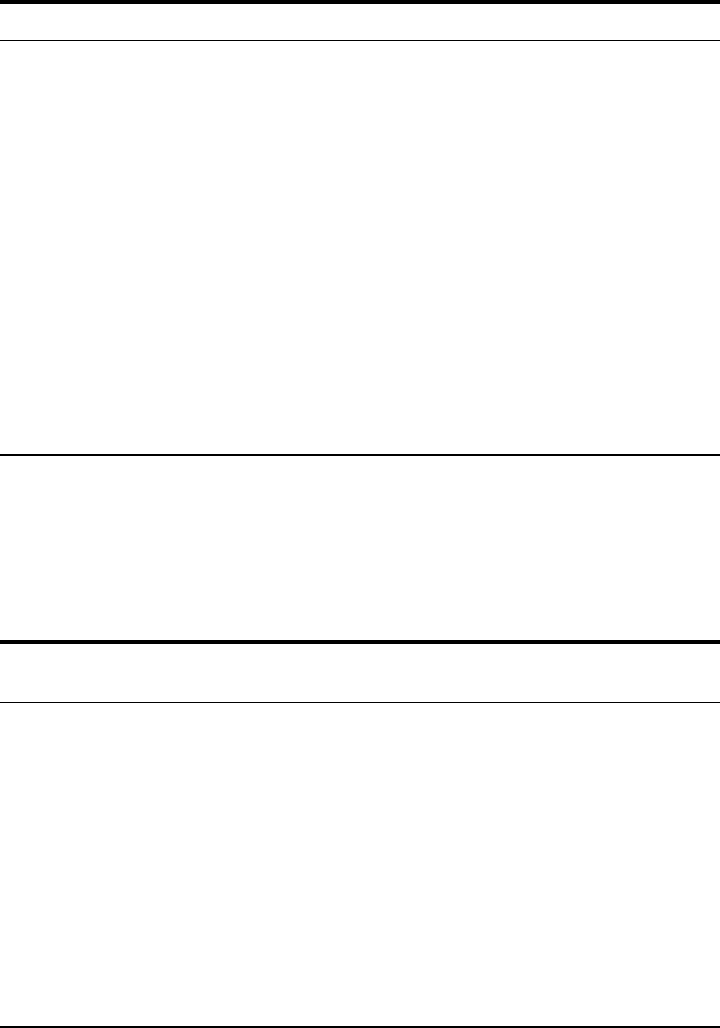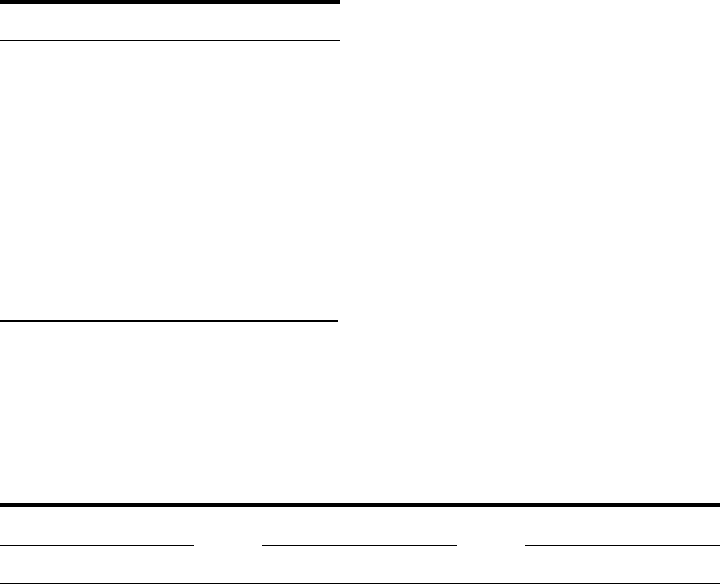Daniel W.W. Biostatistics: A Foundation for Analysis in the Health Sciences
Подождите немного. Документ загружается.


7. When is logistic regression used?
8. Write out and explain the components of the logistic regression model.
9. Define the word odds.
10. What is an odds ratio?
11. Give an example in your field in which logistic regression analysis would be appropriate when the
independent variable is dichotomous.
12. Give an example in your field in which logistic regression analysis would be appropriate when the
independent variable is continuous.
13. Find a published article in the health sciences field in which each of the following techniques is
employed:
(a) Dummy variable coding
(b) Stepwise regression
(c) Logistic regression
Write a report on the article in which you identify the variables involved, the reason for the choice
of the technique, and the conclusions that the authors reach on the basis of their analysis.
14. In Example 10.3.1, we saw that the purpose of a study by Jansen and Keller (A-12) was to pre-
dict the capacity to direct attention (CDA) in elderly subjects. The study collected information on
71 community-dwelling older women with normal mental status. Higher CDA scores indicate bet-
ter attentional functioning. In addition to the variables age and education level, the researchers per-
formed stepwise regression with two additional variables: IADL, a measure of activities of daily
living (higher values indicate greater number of daily activities), and ADS, a measure of atten-
tional demands (higher values indicate more attentional demands). Perform stepwise regression
with the data in the following table and report your final model, p values, and conclusions.
CDA Age Edyrs IADL ADS CDA Age Edyrs IADL ADS
4.57 72 20 28 27 3.17 79 12 28 18
68 12 27 96 87 12 21 61
1.39 65 13 24 97 0.99 71 14 28 55
85 14 27 48 81 16 27 124
84 13 28 50 66 16 28 42
90 15 27 47 81 16 28 64
79 12 28 71 5.07 80 13 28 26
0.30 74 10 24 48 82 12 28 84
69 12 28 67 5.00 65 13 28 43
87 15 21 81 0.63 73 16 26 70
84 12 27 44 2.62 85 16 28 20
0.18 79 12 28 39 1.77 83 17 23 80
71 12 28 124 83 8 27 21
3.26 76 14 29 43 1.44 76 20 28 26
73 14 29 30 77 12 28 53
86 12 26 44 83 12 22 69
3.73 69 17 28 47 79 14 27 82-4.62
-5.77-0.77
-5.77-1.12
-3.79-1.37
-4.43
-6.29
-4.46
-5.86
-2.70
-0.75-4.66
-2.21-2.56
-2.94-3.55
-1.19-3.04
REVIEW QUESTIONS AND EXERCISES 577
(Continued)

CDA Age Edyrs IADL ADS CDA Age Edyrs IADL ADS
66 11 28 49 69 12 28 77
5.74 65 16 28 48 66 14 28 38
2.83 71 14 28 46 0.80 75 12 28 28
80 18 28 25 77 16 27 85
81 11 28 27 78 12 22 82
4.44 66 14 29 54 2.68 83 20 28 34
3.35 76 17 29 26 85 10 20 72
70 12 25 100 4.85 76 18 28 24
76 12 27 38 75 14 29 49
9.61 67 12 26 84 0.63 70 16 28 29
7.57 72 20 29 44 5.92 79 16 27 83
2.21 68 18 28 52 3.63 75 18 28 32
102 12 26 18 94 8 24 80
1.73 67 12 27 80 6.39 76 18 28 41
6.03 66 14 28 54 84 18 27 75
75 18 26 67 1.07 79 17 27 21
91 13 21 101 5.31 78 16 28 18
4.17 74 15 28 90 0.30 79 12 28 38
Source: Debra Jansen, Ph.D., R.N. Used with permission.
15. In the following table are the cardiac output (L/min) and oxygen consumption (V
O
) values for a
sample of adults (A) and children (C), who participated in a study designed to investigate the rela-
tionship among these variables. Measurements were taken both at rest and during exercise. Treat
cardiac output as the dependent variable and use dummy variable coding and analyze the data by
regression techniques. Explain the results. Plot the original data and the fitted regression equations.
Cardiac Cardiac
Output (L/min) V
O
2
(L/min) Age Group Output (L/min) V
O
2
(L/min) Age Group
4.0 .21 A 4.0 .25 C
7.5 .91 C 6.1 .22 A
3.0 .22 C 6.2 .61 C
8.9 .60 A 4.9 .45 C
5.1 .59 C 14.0 1.55 A
5.8 .50 A 12.9 1.11 A
9.1 .99 A 11.3 1.45 A
3.5 .23 C 5.7 .50 C
7.2 .51 A 15.0 1.61 A
5.1 .48 C 7.1 .83 C
6.0 .74 C 8.0 .61 A
5.7 .70 C 8.1 .82 A
14.2 1.60 A 9.0 1.15 C
4.1 .30 C 6.1 .39 A
16. A simple random sample of normal subjects between the ages of 6 and 18 yielded the data on
total body potassium (mEq) and total body water (liters) shown in the following table. Let total
2
-7.65
-0.02
-0.08
-7.07-2.30
-0.08-2.14
-3.13
-3.69
-4.60-0.29
-0.75-2.40
-2.22
-2.03-5.92
578 CHAPTER 11 REGRESSION ANALYSIS: SOME ADDITIONAL TECHNIQUES

potassium be the dependent variable and use dummy variable coding to quantify the qualitative
variable. Analyze the data using regression techniques. Explain the results. Plot the original data
and the fitted regression equations.
Total Body Total Body Total Body Total Body
Potassium Water Sex Potassium Water Sex
795 13 M 950 12 F
1590 16 F 2400 26 M
1250 15 M 1600 24 F
1680 21 M 2400 30 M
800 10 F 1695 26 F
2100 26 M 1510 21 F
1700 15 F 2000 27 F
1260 16 M 3200 33 M
1370 18 F 1050 14 F
1000 11 F 2600 31 M
1100 14 M 3000 37 M
1500 20 F 1900 25 F
1450 19 M 2200 30 F
1100 14 M
17. The data shown in the following table were collected as part of a study in which the subjects were
preterm infants with low birth weights born in three different hospitals. Use dummy variable cod-
ing and multiple regression techniques to analyze these data. May we conclude that the three sam-
ple hospital populations differ with respect to mean birth weight when gestational age is taken into
account? May we conclude that there is interaction between hospital of birth and gestational age?
Plot the original data and the fitted regression equations.
Birth Gestation Hospital Birth Gestation Hospital
Weight (kg) Age (weeks) of Birth Weight (kg) Age (weeks) of Birth
1.4 30 A 1.0 29 C
.9 27 B 1.4 33 C
1.2 33 A .9 28 A
1.1 29 C 1.0 28 C
1.3 35 A 1.9 36 B
.8 27 B 1.3 29 B
1.0 32 A 1.7 35 C
.7 26 A 1.0 30 A
1.2 30 C .9 28 A
.8 28 A 1.0 31 A
1.5 32 B 1.6 31 B
1.3 31 A 1.6 33 B
1.4 32 C 1.7 34 B
1.5 33 B 1.6 35 C
1.0 27 A 1.2 28 A
1.8 35 B 1.5 30 B
REVIEW QUESTIONS AND EXERCISES 579
(Continued)

Birth Gestation Hospital Birth Gestation Hospital
Weight (kg) Age (weeks) of Birth Weight (kg) Age (weeks) of Birth
1.4 36 C 1.8 34 B
1.2 34 A 1.5 34 C
1.1 28 B 1.2 30 A
1.2 30 B 1.2 32 C
18. Refer to Chapter 9, Review Exercise 18. In the study cited in that exercise, Maria Mathias (A-13)
investigated the relationship between ages (AGE) of boys and improvement in measures of hyper-
activity, attitude, and social behavior. In the study, subjects were randomly assigned to two differ-
ent treatments. The control group (TREAT ) received standard therapy for hyperactivity, and
the treatment group (TREAT ) received standard therapy plus pet therapy. The results are
shown in the following table. Create a scatter plot with age as the independent variable and ATT
(change in attitude with positive numbers indicating positive change in attitude) as the dependent
variable. Use different symbols for the two different treatment groups. Use multiple regression
techniques to determine whether age, treatment, or the interaction are useful in predicting ATT.
Report your results.
Subject TREAT AGE ATT Subject TREAT AGE ATT
1 1 9 17 0 10 0.4
2 1 9 0.0 18 0 7 0.0
3 1 13 19 0 12 1.1
4 1 6 20 0 9 0.2
5 1 9 1.0 21 0 7 0.4
6 1 8 0.8 22 0 6 0.0
7 1 8 23 1 11 0.6
8 1 9 24 1 11 0.4
9 0 7 0.0 25 1 11 1.0
10 0 12 0.4 26 1 11 0.8
11 0 9 27 1 11 1.2
12 0 10 1.0 28 1 11 0.2
13 0 12 1.4 29 1 11 0.8
14 0 9 1.0 30 1 8 0.0
15 0 12 0.8 31 1 9 0.4
16 0 9 1.0
Source: Maria Mathias, M.D. and the Wright State University Statistical Consulting Center. Used with permission.
For each study described in Exercises 19 through 21, answer as many of the following questions
as possible:
(a) Which is the dependent variable?
(b) What are the independent variables?
(c) What are the appropriate null and alternative hypotheses?
(d) Which null hypotheses do you think were rejected? Why?
(e) Which is the more relevant objective, prediction or estimation, or are the two equally relevant?
Explain your answer.
-0.8
-1.2
-0.6
-0.4
-0.4
-1.2
= 1
= 0
580 CHAPTER 11 REGRESSION ANALYSIS: SOME ADDITIONAL TECHNIQUES
(f) What is the sampled population?
(g) What is the target population?
(h) Which variables are related to which other variables? Are the relationships direct or inverse?
(i) Write out the regression equation using appropriate numbers for parameter estimates.
(j) Give numerical values for any other statistics that you can.
(k) Identify each variable as to whether it is quantitative or qualitative.
(l) Explain the meaning of any statistics for which numerical values are given.
19. Golfinopoulos and Arhonditsis (A-14) used a multiple regression model in a study of tri-
halomethanes (THMs) in drinking water in Athens, Greece. THMs are of concern since they have
been related to cancer and reproductive outcomes. The researchers found the following regression
model useful in predicting THM:
The variables were as follows: chla chlorophyll concentration, pH acid/base scale, Br
bromide concentration, S dummy variable for summer, Sp dummy variable for spring, T
temperature, and CL chlorine concentration. The researchers reported R .52, p
20. In a study by Takata et al. (A-15), investigators evaluated the relationship between chewing ability
and teeth number and measures of physical fitness in a sample of subjects ages 80 or higher in Japan.
One of the outcome variables that measured physical fitness was leg extensor strength. To measure
the ability to chew foods, subjects were asked about their ability to chew 15 foods (peanuts, vinegared
octopus, and French bread, among others). Consideration of such variables as height, body weight,
gender, systolic blood pressure, serum albumin, fasting glucose concentration, back pain, smoking,
alcohol consumption, marital status, regular medical treatment, and regular exercise revealed that the
number of chewable foods was significant in predicting leg extensor strength
However, in the presence of the other variables, number of teeth was not a significant predictor
21. Varela et al. (A-16) examined 515 patients who underwent lung resection for bronchogenic carci-
noma. The outcome variable was the occurrence of cardiorespiratory morbidity after surgery. Any
of the following postoperative events indicated morbidity: pulmonary atelectasis or pneumonia,
respiratory or ventilatory insufficiency at discharge, need for mechanical ventilation at any time
after extubation in the operating room, pulmonary thromboembolism, arrhythmia, myocardial
ischemia or infarct, and clinical cardiac insufficiency. Performing a stepwise logistic regression,
the researchers found that age and postoperative forced expiratory volume
were statistically significant in predicting the occurrence of cardiorespiratory morbidity.
For each of the data sets given in Exercises 22 through 29, do as many of the following as you
think appropriate:
(a) Apply one or more of the techniques discussed in this chapter.
(b) Apply one or more of the techniques discussed in previous chapters.
(c) Construct graphs.
(d) Formulate relevant hypotheses, perform the appropriate tests, and find p values.
(e) State the statistical decisions and clinical conclusions that the results of your hypothesis tests
justify.
(f) Describe the population(s) to which you think your inferences are applicable.
1p = .00321p 6 .0012
1b
N
1
= .003, p = .93732.
1b
N
1
= .075, p = .03662.
6 .001.==
===
===
-43.63S + 1.13Sp + 2.62T * S - .72T * CL
THM =-.26chla + 1.57 pH + 28.74Br - 66.72Br
2
REVIEW QUESTIONS AND EXERCISES 581

22. A study by Davies et al. (A-17) was motivated by the fact that, in previous studies of contractile
responses to -adrenoceptor agonists in single myocytes from failing and nonfailing human hearts,
they had observed an age-related decline in maximum response to isoproterenol, at frequencies
where the maximum response to high Ca in the same cell was unchanged. For the present study,
the investigators computed the isoproterenol/Ca ratio (ISO/CA) from measurements taken on
myocytes from patients ranging in age from 7 to 70 years. Subjects were classified as older (
years) and younger. The following are the (ISO/CA) values, age, and myocyte source of subjects
in the study. Myocyte sources were reported as donor and biopsy.
Age ISO/CA Myocyte Source
7 1.37 Donor
21 1.39 Donor
28 1.17 Donor
35 0.71 Donor
38 1.14 Donor
50 0.95 Donor
51 0.86 Biopsy
52 0.72 Biopsy
55 0.53 Biopsy
56 0.81 Biopsy
61 0.86 Biopsy
70 0.77 Biopsy
23. Hayton et al. (A-18) investigated the pharmacokinetics and bioavailability of cefetamet and cefe-
tamet pivoxil in infants between the ages of 3.5 and 17.3 months who had received the antibiotic
during and after urological surgery. Among the pharmacokinetic data collected were the follow-
ing measurements of the steady-state apparent volume of distribution (V). Also shown are previ-
ously collected data on children ages 3 to 12 years (A-19) and adults (A-20). Weights (W) of
subjects are also shown.
Infants Children Adults
W (kg) V (liters) W (kg) V (liters) W (kg) V (liters)
6.2 2.936 13 4.72 61 19.7
7.5 3.616 14 5.23 80 23.7
7.0 1.735 14 5.85 96 20.0
7.1 2.557 15 4.17 75 19.5
7.8 2.883 16 5.01 60 19.6
8.2 2.318 17 5.81 68 21.5
8.3 3.689 17 7.03 72.2 21.9
8.5 4.133 17.5 6.62 87 30.9
8.6 2.989 17 4.98 66.5 20.4
8.8 3.500 17.5 6.45
10.0 4.235 20 7.73
10.0 4.804 23 7.67
10.2 2.833 25 9.82
750
2+
2+
b
582 CHAPTER 11 REGRESSION ANALYSIS: SOME ADDITIONAL TECHNIQUES
Source: Dr. Sian E. Harding.
Used with permission.
(Continued)

Infants Children Adults
W (kg) V (liters) W (kg) V (liters) W (kg) V (liters)
10.3 4.068 37 14.40
10.6 3.640 28 10.90
10.7 4.067 47 15.40
10.8 8.366 29 9.86
11.0 4.614 37 14.40
12.5 3.168
13.1 4.158
Source: Dr. Klaus Stoeckel. Used with permission.
24. According to Fils-Aime et al. (A-21), epidemiologic surveys have found that alcoholism is the most
common mental or substance abuse disorder among men in the United States. Fils-Aime and asso-
ciates investigated the interrelationships of age at onset of excessive alcohol consumption, family his-
tory of alcoholism, psychiatric comorbidity, and cerebrospinal fluid (CSF) monoamine metabolite
concentrations in abstinent, treatment-seeking alcoholics. Subjects were mostly white males classi-
fied as experiencing early (25 years or younger) or late (older than 25 years) onset of excessive alco-
hol consumption. Among the data collected were the following measurements on CSF tryptophan
(TRYPT) and 5-hydroxyindoleacetic acid (5-HIAA) concentrations (pmol/ml).
Onset Onset
1 Early 1 Early
5-HIAA TRYPT 0 Late 5-HIAA TRYPT 0 Late
57 3315 1 102 3181 1
116 2599 0 51 2513 1
81 3334 1 92 2764 1
78 2505 0 104 3098 1
206 3269 0 50 2900 1
64 3543 1 93 4125 1
123 3374 0 146 6081 1
147 2345 1 96 2972 1
102 2855 1 112 3962 0
93 2972 1 23 4894 1
128 3904 0 109 3543 1
69 2564 1 80 2622 1
20 8832 1 111 3012 1
66 4894 0 85 2685 1
90 6017 1 131 3059 0
103 3143 0 58 3946 1
68 3729 0 110 3356 0
81 3150 1 80 3671 1
143 3955 1 42 4155 1
121 4288 1 80 1923 1
149 3404 0 91 3589 1
82 2547 1 102 3839 0
REVIEW QUESTIONS AND EXERCISES 583
(Continued)

Onset Onset
1 Early 1 Early
5-HIAA TRYPT 0 Late 5-HIAA TRYPT 0 Late
100 3633 1 93 2627 0
117 3309 1 98 3181 0
41 3315 1 78 4428 0
223 3418 0 152 3303 0
96 2295 1 108 5386 1
87 3232 0 102 3282 1
96 3496 1 122 2754 1
34 2656 1 81 4321 1
98 4318 1 81 3386 1
86 3510 0 99 3344 1
118 3613 1 73 3789 1
84 3117 1 163 2131 1
99 3496 1 109 3030 0
114 4612 1 90 4731 1
140 3051 1 110 4581 1
74 3067 1 48 3292 0
45 2782 1 77 4494 0
51 5034 1 67 3453 1
99 2564 1 92 3373 1
54 4335 1 86 3787 0
93 2596 1 101 3842 1
50 2960 1 88 2882 1
118 3916 0 38 2949 1
96 2797 0 75 2248 0
49 3699 1 35 3203 0
133 2394 0 53 3248 1
105 2495 0 77 3455 0
61 2496 1 179 4521 1
197 2123 1 151 3240 1
87 3320 0 57 3905 1
50 3117 1 45 3642 1
109 3308 0 76 5233 0
59 3280 1 46 4150 1
107 3151 1 98 2579 1
85 3955 0 84 3249 1
156 3126 0 119 3381 0
110 2913 0 41 4020 1
81 3786 1 40 4569 1
53 3616 1 149 3781 1
64 3277 1 116 2346 1
57 2656 1 76 3901 1
29 4953 0 96 3822 1
34 4340 1
Source: Dr. Markku Linnoila. Used with permission.
584 CHAPTER 11 REGRESSION ANALYSIS: SOME ADDITIONAL TECHNIQUES

25. The objective of a study by Abrahamsson et al. (A-22) was to investigate the anti-thrombotic effects
of an inhibitor of the plasminogen activator inhibitor-1 (PAI-1) in rats given endotoxin. Experi-
mental subjects were male Sprague–Dawley rats weighing between 300 and 400 grams. Among
the data collected were the following measurements on PAI-1 activity and the lung
125
I-concen-
tration in anesthetized rats given three drugs:
Plasma PAI-1 Activity
125
I-Fibrin in the Lungs
Drugs (U/ml) (% of Ref. Sample)
Endotoxin 127 158
175 154
161 118
137 77
219 172
260 277
203 216
195 169
414 272
244 192
Endotoxin PRAP-1 low dose 107 49
103 28
248 187
164 109
176 96
230 126
184 148
276 17
201 97
158 86
Endotoxin PRAP-1 high dose 132 86
130 24
75 17
140 41
166 114
194 110
121 26
111 53
208 71
211 90
Source: Dr. Tommy Abrahamsson. Used with permission.
26. Pearse and Sylvester (A-23) conducted a study to determine the separate contributions of
ischemia and extracorporeal perfusion to vascular injury occurring in isolated sheep lungs and
to determine the oxygen dependence of this injury. Lungs were subjected to ischemia alone,
extracorporeal perfusion alone, and both ischemia and extracorporeal perfusion. Among the data
collected were the following observations on change in pulmonary arterial pressure (mm Hg)
and pulmonary vascular permeability assessed by estimation of the reflection coefficient for
albumin in perfused lungs with and without preceding ischemia:
+
+
REVIEW QUESTIONS AND EXERCISES 585

Ischemic–Perfused Lungs Perfused Lungs
Change in Change in
Pulmonary Reflection Pulmonary Reflection
Pressure Coefficient Pressure Coefficient
8.0 0.220 34.0 0.693
3.0 0.560 31.0 0.470
10.0 0.550 4.0 0.651
23.0 0.806 48.0 0.999
15.0 0.472 32.0 0.719
43.0 0.759 27.0 0.902
18.0 0.489 25.0 0.736
27.0 0.546 25.0 0.718
13.0 0.548
0.0 0.467
Source: Dr. David B. Pearse. Used with permission.
27. The purpose of a study by Balzamo et al. (A-24) was to investigate, in anesthetized rabbits, the
effects of mechanical ventilation on the concentration of substance P (SP) measured by radioim-
munoassay in nerves and muscles associated with ventilation and participating in the sensory inner-
vation of the respiratory apparatus and heart. SP is a neurotransmitter located in primary sensory
neurons in the central and autonomic nervous systems. Among the data collected were the follow-
ing measures of SP concentration in cervical vagus nerves (X) and corresponding nodose ganglia
(NG), right and left sides:
SPXright SPNGright SPXleft SPNGleft
0.6500 9.6300 3.3000 1.9300
2.5600 3.7800 0.6200 2.8700
1.1300 7.3900 0.9600 1.3100
1.5500 3.2800 2.7000 5.6400
35.9000 22.0000 4.5000 9.1000
19.0000 22.8000 8.6000 8.0000
13.6000 2.3000 7.0000 8.3000
8.0000 15.8000 4.1000 4.7000
7.4000 1.6000 5.5000 2.5000
3.3000 11.6000 9.7000 8.0000
19.8000 18.0000 13.8000 8.0000
8.5000 6.2000 11.0000 17.2000
5.4000 7.8000 11.9000 5.3000
11.9000 16.9000 8.2000 10.6000
47.7000 35.9000 3.9000 3.3000
14.2000 10.2000 3.2000 1.9000
2.9000 1.6000 2.7000 3.5000
6.6000 3.7000 2.8000 2.5000
3.7000 1.3000
Source: Dr. Yves Jammes. Used with permission.
586 CHAPTER 11 REGRESSION ANALYSIS: SOME ADDITIONAL TECHNIQUES
